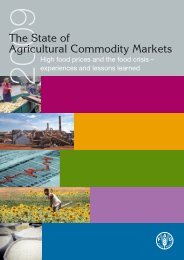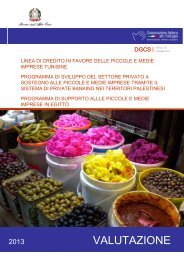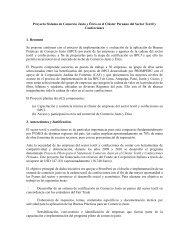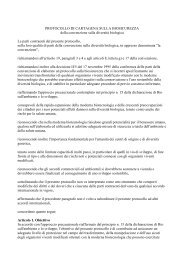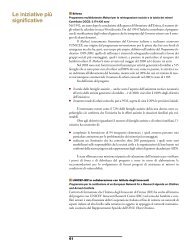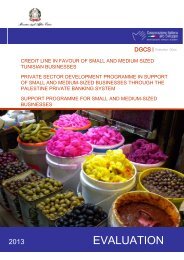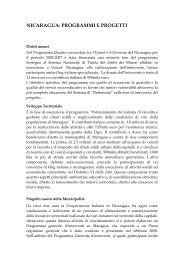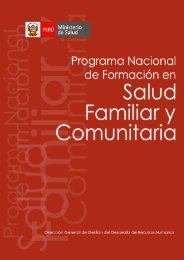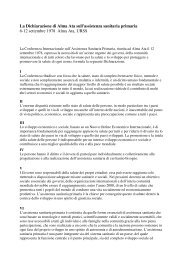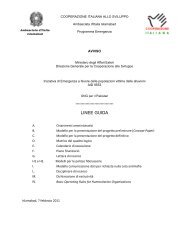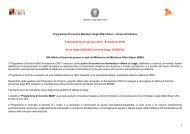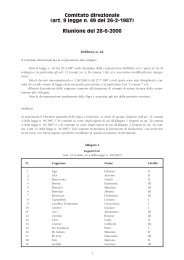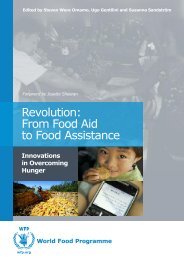FRONTESPIZIO - Cooperazione Italiana allo Sviluppo
FRONTESPIZIO - Cooperazione Italiana allo Sviluppo
FRONTESPIZIO - Cooperazione Italiana allo Sviluppo
You also want an ePaper? Increase the reach of your titles
YUMPU automatically turns print PDFs into web optimized ePapers that Google loves.
1. Introduction: dermatology and human rights 9According to the most recent United Nations’ estimate, there were at least175 million immigrants worldwide in 2003, of whom six out of 10 were settledin the industrialised countries. There were more than 20 million legalimmigrants in Europe at the beginning of 2002. Almost 16 million peoplewere recognised in 2000 as refugees. In addition, there were 7 million displacedpersons, almost 1 million asylum seekers and repatriated refugees inthe world. Most of them are children.Italy is the largest country of emigration in modern history, with 28 millionpeople emigrating between 1861 and the beginning of this new century. Italyis the most important Mediterranean Euro-member state in transition frombeing a country of emigration to one of immigration.The “Italian model” of immigration had become important most obviouslybecause of its size. At the beginning of 2003, the total number of residencepermit holders in Italy was 2.500.000, approximately 4.0% of the Italianpopulation, or1 immigrant for every 38 Italian citizens.Children are one of the most significant indicators of stable immigration inItaly. The number of minors grew from 126,000 at the end of 1996 to278,000 at the end of 2000. Including new births (more than 25,000) andthose entering through family reunion, their number already exceeds300,000, one-fifth of the immigrant population. There are almost 30.000births annually to couples both of whom are foreign citizens. The term “bambinostraniero” (foreign child) is also incorrect, because we are often talking ofchildren born in Italy. Their number reached 100,000 only four years ago,and grew to 147,000 during the school year 2001-2002 and 182,000 in thefollowing year. Six out of ten are enrolled at primary or nursery schools. Theyare now less than 2% of the resident population; in 2017, according to a governmentestimate, their number could rise to 529,000, or 6.5% of the schoolpopulation.ResultsIn our Department, in the last three years, we visited 1,137 foreign children,255 of them had the double nationality and 50% of them were under 14. Weobserved a high prevalence of skin infectious diseases (67.3), odontoiatric diseases(24.4%), traumatic diseases (10.2%) and gastroenteric diseases (6.2%gastritis and duodenitis, 6.1% liver diseases) and also skin tuberculosis andHIV/AIDS. Many little girls are affected by different forms of FemaleGenital Mutilation (FGM) and we observed 127 girls with FGM, comingfrom the sub-Saharan Africa. We examined 654 abandoned children in the



